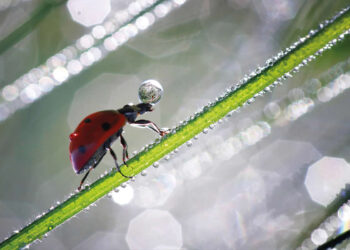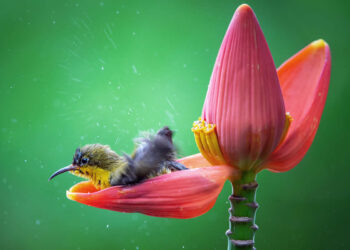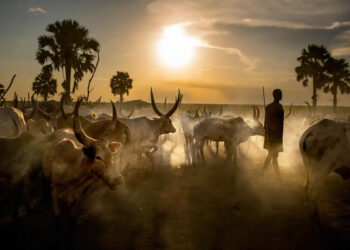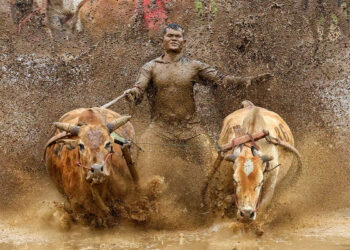BigPicture has unveiled the 20 stunning finalists for the 2025 Natural World People’s Choice Award, and public voting is officially open from July 1 to July 31 at midnight (PT). These captivating images, selected by the BigPicture team based on judges’ scores, represent the extraordinary beauty and fragility of the natural world through powerful visual storytelling.
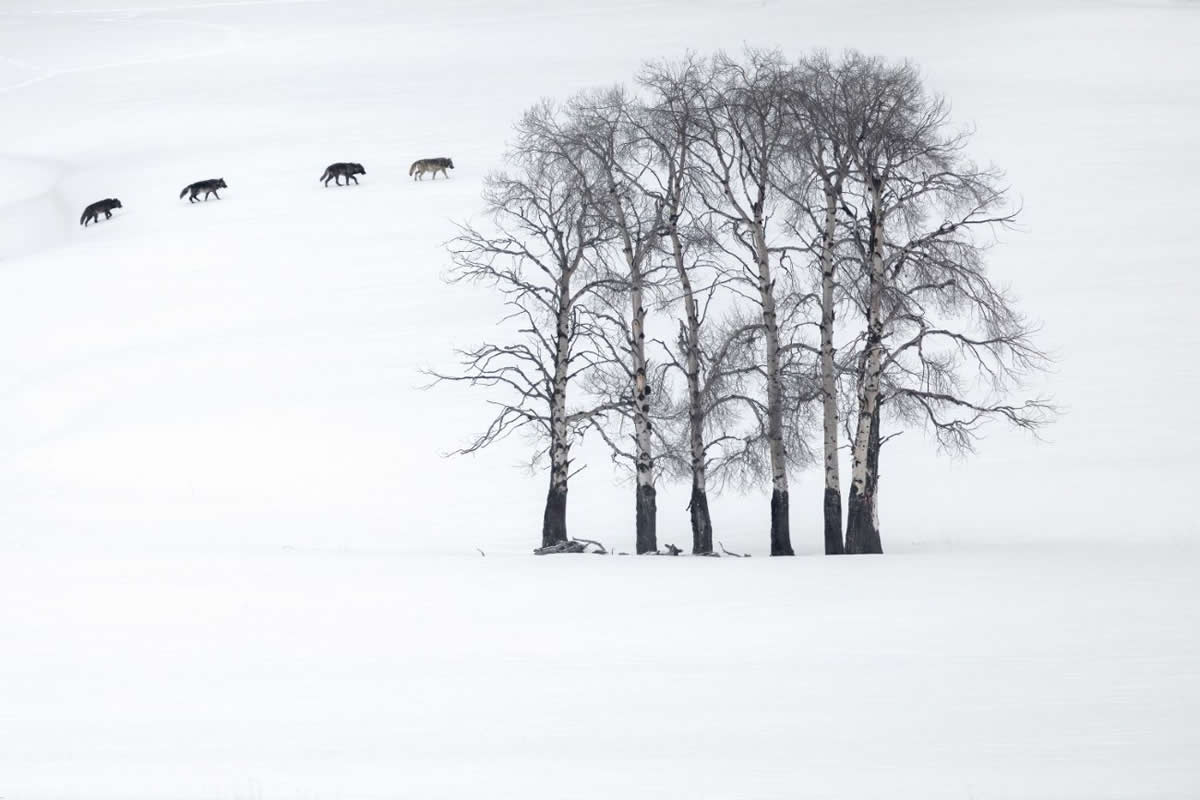
Photo by: Devon Pradhuman
From breathtaking wildlife portraits and intimate animal interactions to dramatic environmental scenes, each photograph captures a moment that inspires awe and reflection. The diversity of submissions highlights the talent and dedication of photographers from around the globe who use their lenses to celebrate nature and raise awareness of conservation efforts.
The finalist whose photo receives the most public votes will earn the title of People’s Choice Award winner, a $300 cash prize, and a featured spotlight on the BigPicture website alongside their bio. In addition, the winning image will be showcased in the BigPicture Exhibition interactive display at the California Academy of Sciences starting in Fall 2025.
This is a chance to support visual storytellers and help amplify their message about the wonders and challenges of our planet. Cast your vote and be part of this celebration of nature through photography.
Scroll down and inspire yourself. You can check their website for more information.
You can find more info about Big Picture:
#1. "Look At Me!" by Reiko Takahashi, Japan
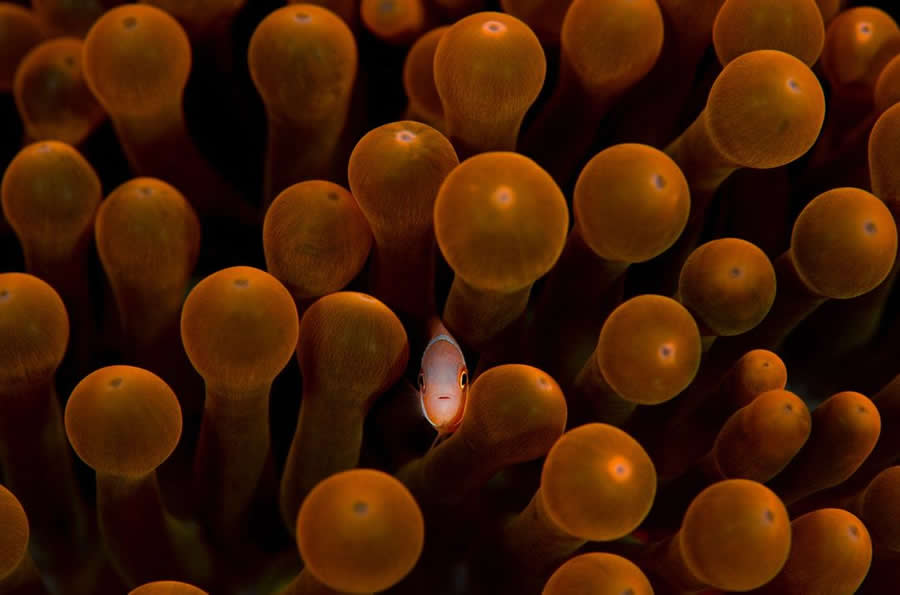
"This photographer waited patiently for hours as other fish came and went from the shelter of this Sea anemone (order Actiniaria) in order to capture the precise moment when only this young Clownfish (genus Amphiprion) peered out in frame."
#2. "Vulture Restaurant" by Alain Schroeder, France
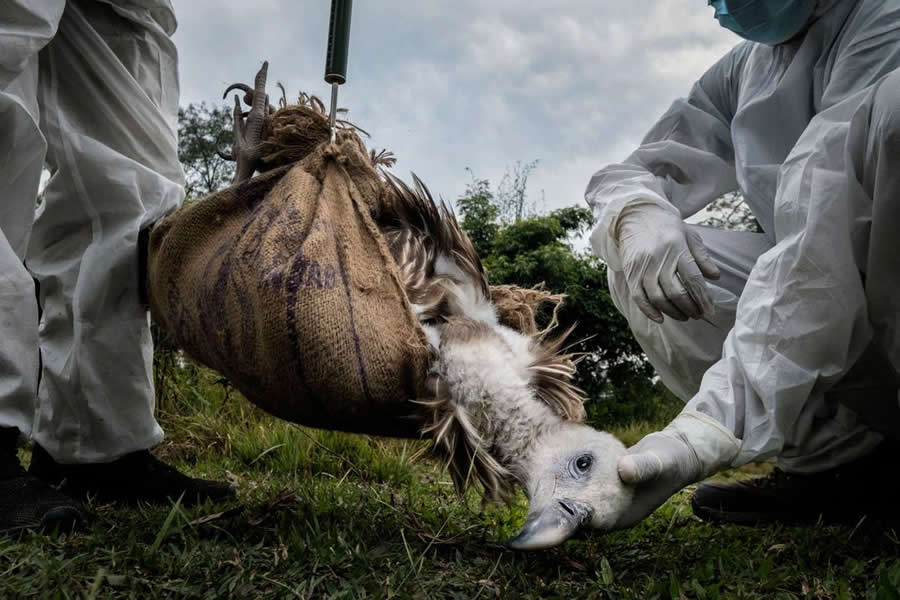
"Team members of the Jatayu Vulture Restaurant weigh a wounded Himalayan vulture (Gyps himalayensis). The first community managed vulture restaurant, Jatayu Vulture Restaurant is a space specifically designed for vultures to be fed and nurtured in safety, established after the numbers of vultures were reduced from over a million to just 20,000. Once this vulture has fully healed, it will be released back into the wild."
#3. "Circle of Life" by Angel Fitor, Spain
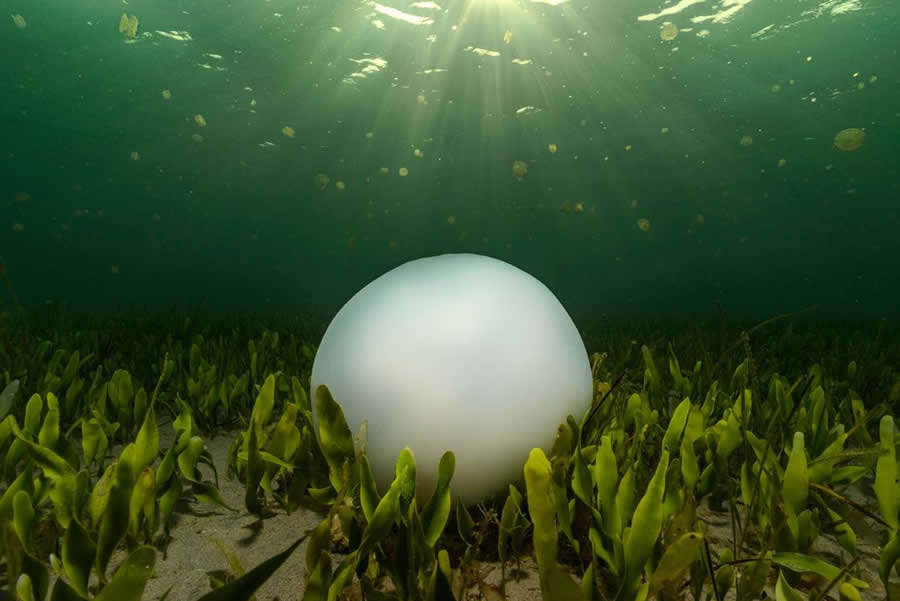
"A poignant portrait of the duality of life and death: A dying Barrel jellyfish (Rhizostoma pulmo) rests on a weed bed as thousands of newly born Mediterranean jellyfish (Cotylorhiza tuberculata) bloom all around it."
#4. "Maternal Huddle" by Anton Sorokin, United States
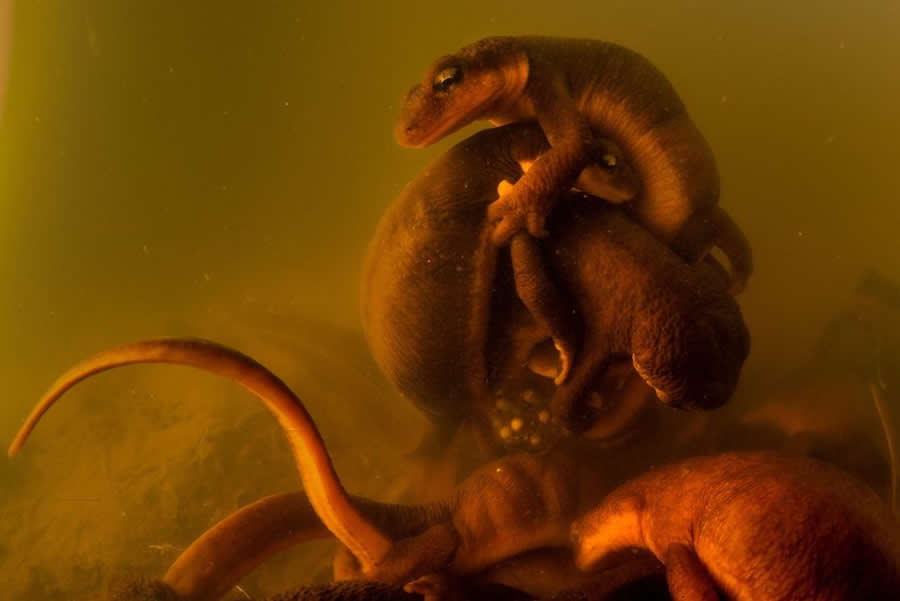
"A glimpse into the unseen lives of amphibians: female California newts (Taricha torosa) gather together in a ball as they lay their eggs at the bottom of a pond. This pond is more than likely the one in which these newts originated from, as newts tend to return to their own hatchplace to lay their eggs."
#5. "Hitchhiker" by Caitlin Winskill, Australia
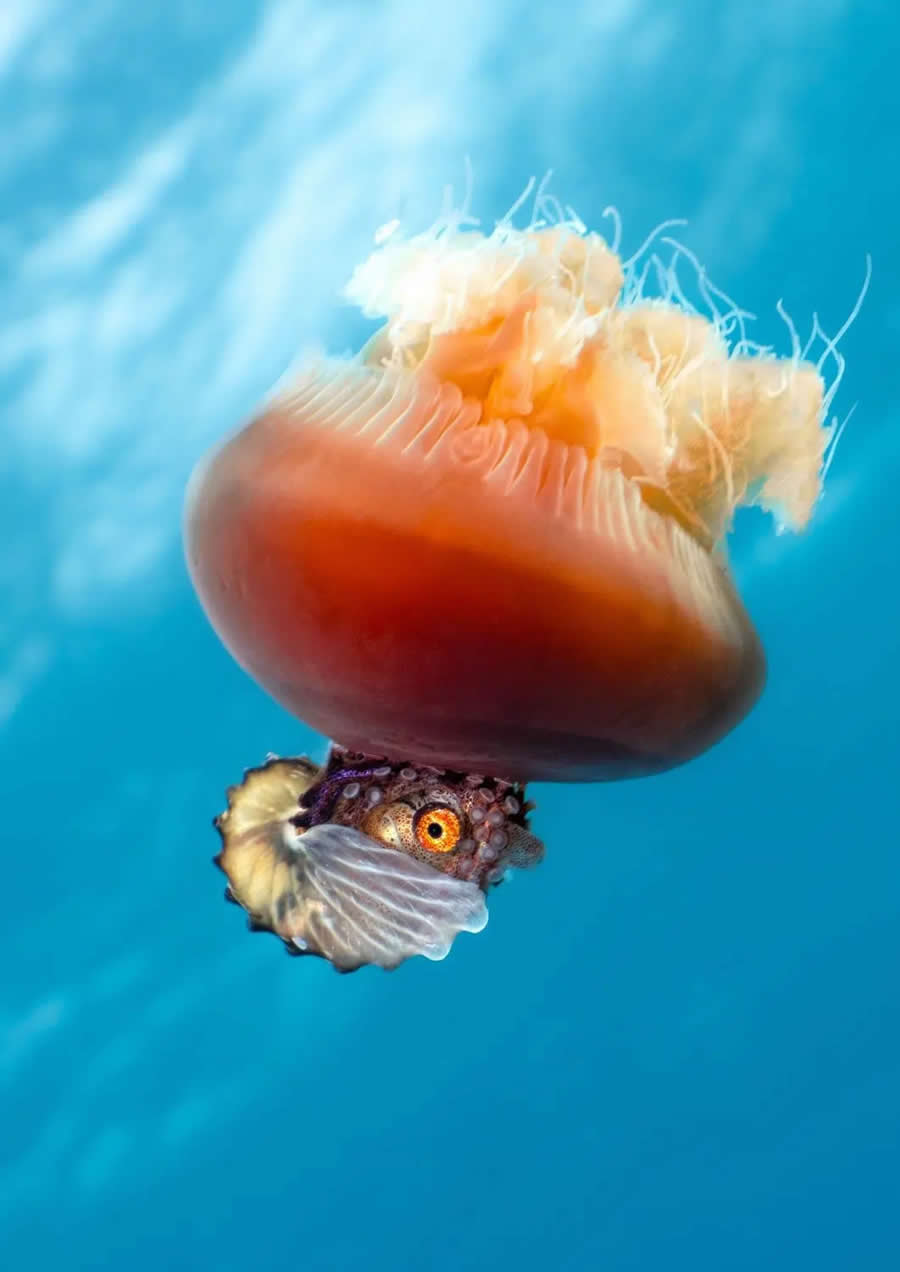
"An argonaut (genus Argonauta) hitches a ride upon an unsuspecting Bell jellyfish (family Corynidae). Argonauts are open-sea octopi, which is odd as Bell jellyfish are often found in harbors closer to shore. It’s anyone’s guess how this argonaut ended up hitching a ride, but it makes for one spectacular photo!"
#6. "Relaxing in the Snow" by Daniel Valverde Fernandez, Spain
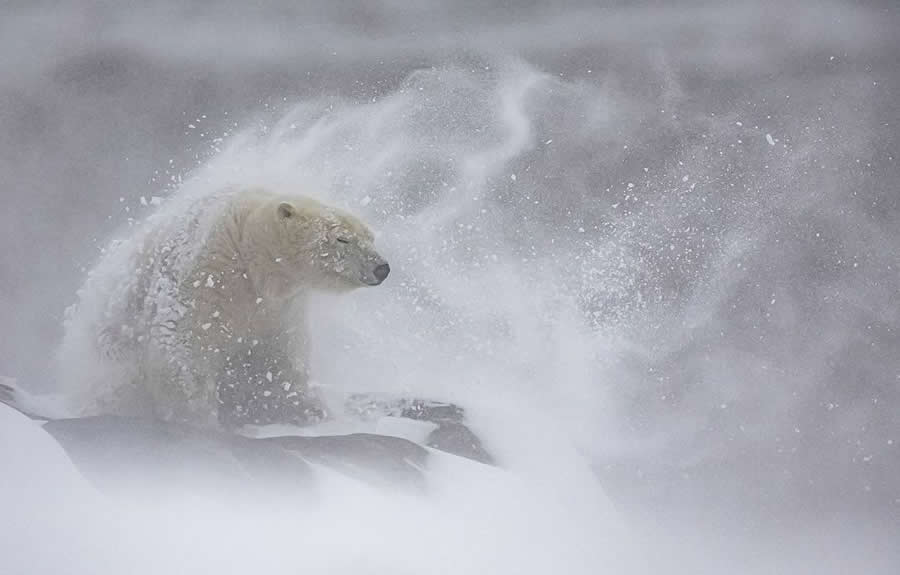
"Despite the unfavorable conditions of the Canadian tundra, this Polar bear (Ursus maritimus) looks surprisingly tranquil and relaxed as it shakes off a considerable sheet of snow that has fallen on it in the middle of a storm."
#7. "Aspen Shadows" by Devon Pradhuman, United States
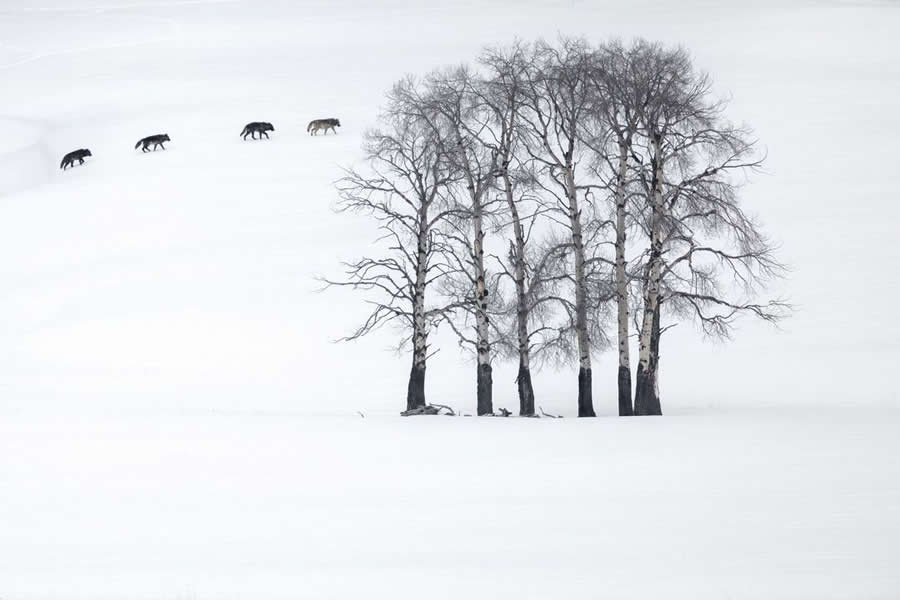
"Four wolves (Canis lupus) traverse the snowy landscape of Yellowstone in search of their next meal, their presence echoing through the minimalist beauty of snow and Aspen trees (genus Poplar). Wolves are a very polarizing subject when it comes to the lands they roam."
#8. "Sniff" by Doug Gimesy, Australia
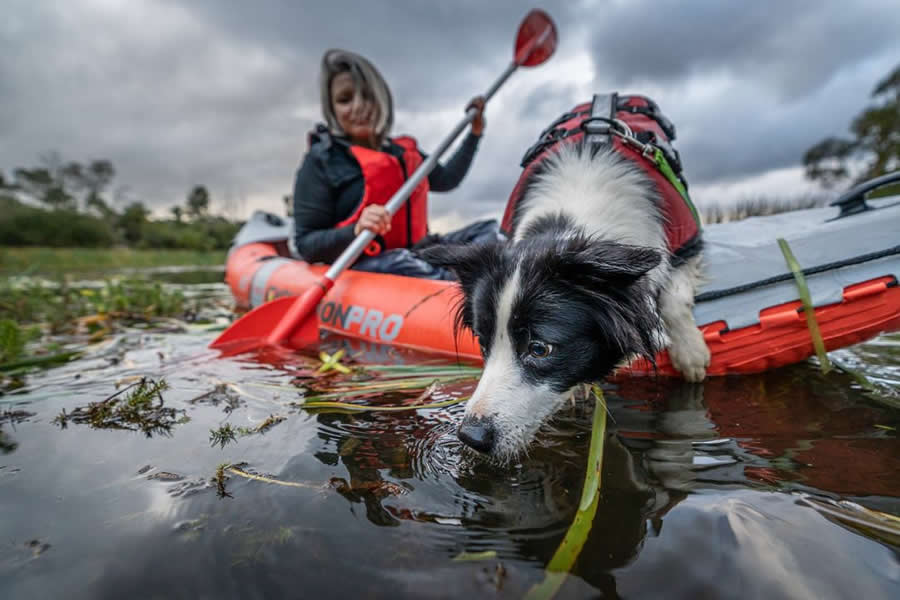
"Border collie conservation detector dog (Canis familiaris) Raasay, undertakes kayak training with her handler Tracy to sniff out invasive aquatic weeds such as Common cordgrass (Spartina anglica). Whenever Raasay finds a patch of Spartina, she will sit, lay down, or—if atop a kayak—point with her nose to alert her handler."
#9. "In Mother’s Arms" by Dvir Barkay, United States
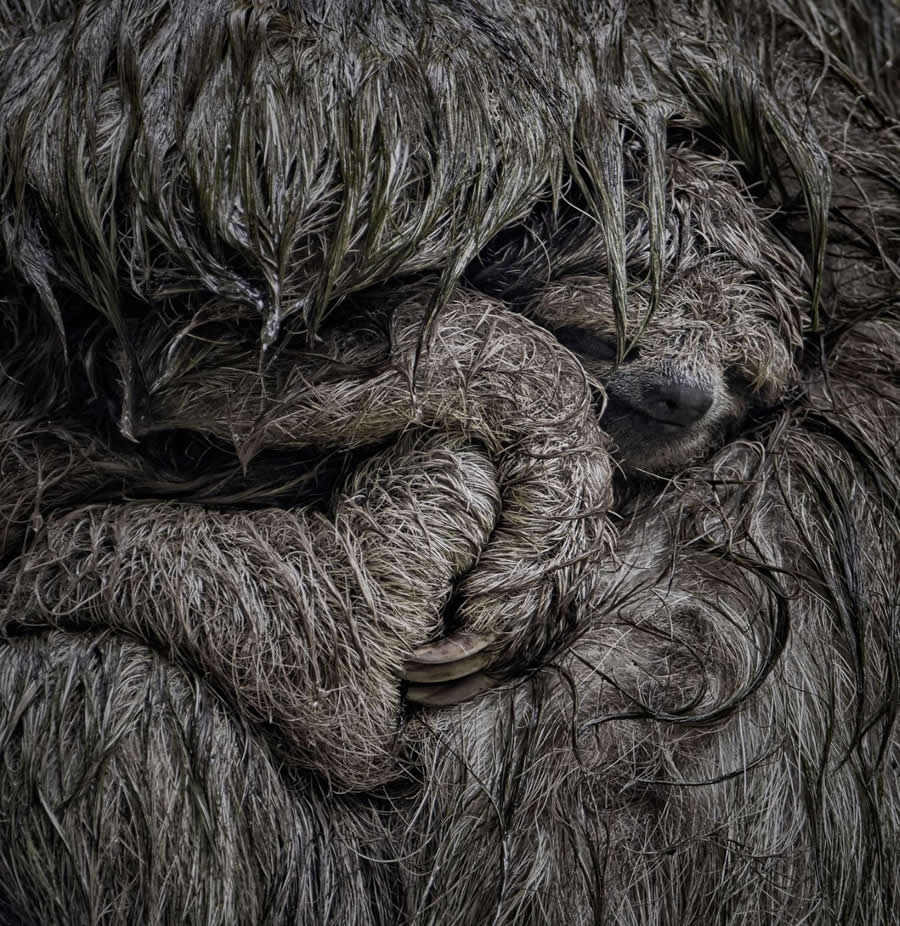
"A baby Brown-throated sloth (Bradypus variegatus) sleeps in the protective embrace of its mother’s arms, ensuring it doesn’t get wet during a downpour."
#10. "Cicada Awakening" by Gavin Koester, United States
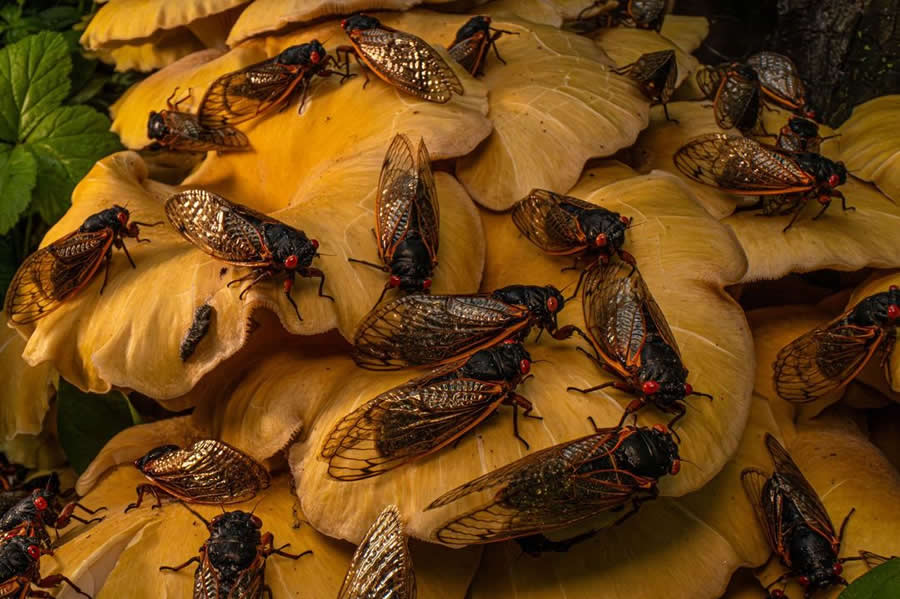
"A rare and striking moment: A massive cluster of yellow mushrooms at the base of a tree, surrounded by an overwhelming number of Pharaoh cicadas (Magicicada septendecim). Despite their massive numbers, the cicadas seamlessly integrate with their environment, almost blending with the landscape in unexpected ways."
#11. "Blue Dream" by Haiyong Cai, China
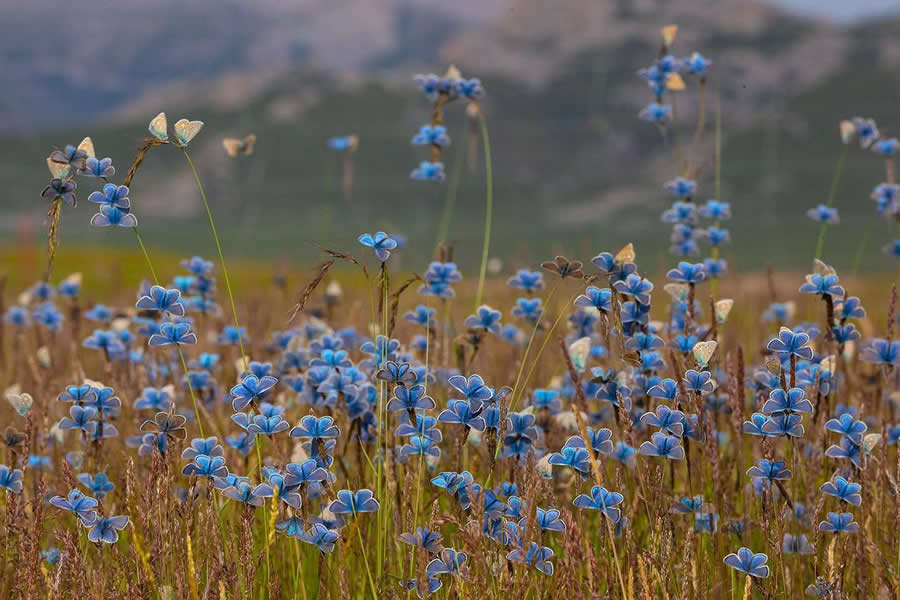
"A group of Common meadow blue butterflies (Polyommatus eros) rests on the grassland, looking — at first glance— almost like a large field of blooming flowers."
#12. "Fortress" by Iacopo Nerozzi, Italy
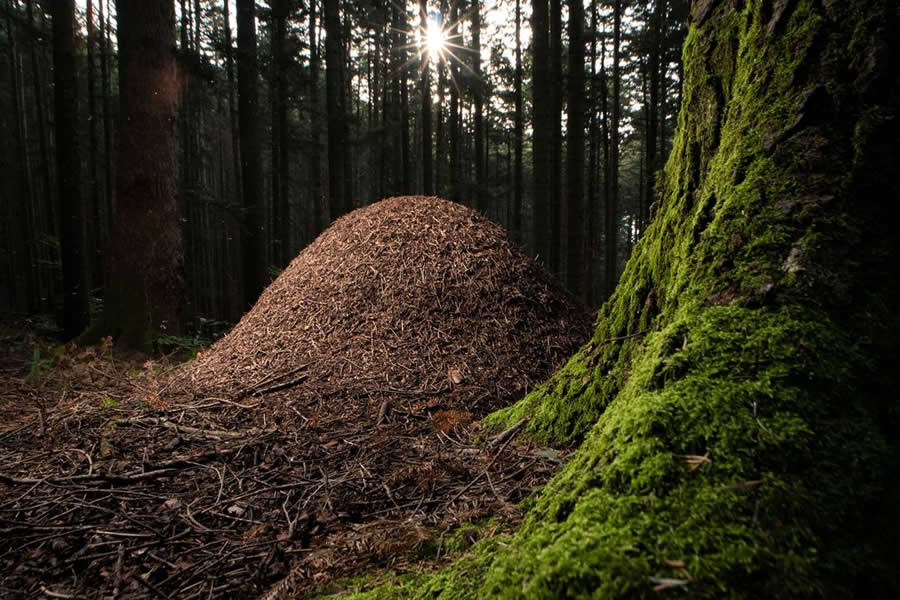
"A masterpiece of animal engineering: This pile of woodland debris is actually an enormous nest curated by Red wood ants (Formica rufa). These enormous nests are made up of respective sections above and below the ground, which red wood ants create by burrowing into the earth, as well as accumulating needles, leaves, bark, and twigs. "
#13. "Pathfinders" by Jonas Beyer, Denmark
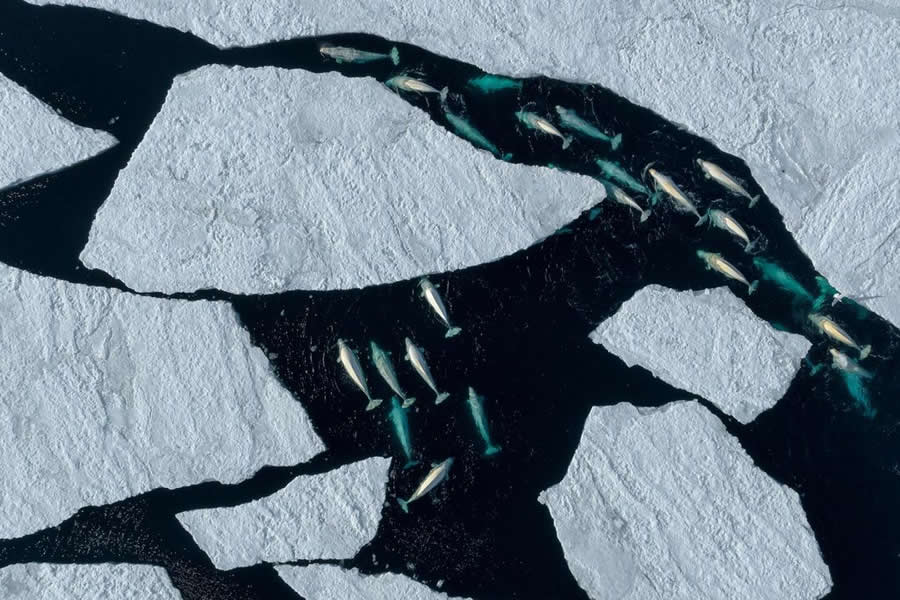
"A pod of Beluga whales (Delphinapterus leucas) gracefully glides through the frigid waters of a broken fjord, their white forms contrasting against the deep, icy blue. As they move in unison, threading their way through the maze of shifting ice, they embody the resilience and adaptability needed to survive in the ever-changing Arctic. "
#14. "The Frigatebird and the Diamond Ring" by Liron Gertsman, Canada
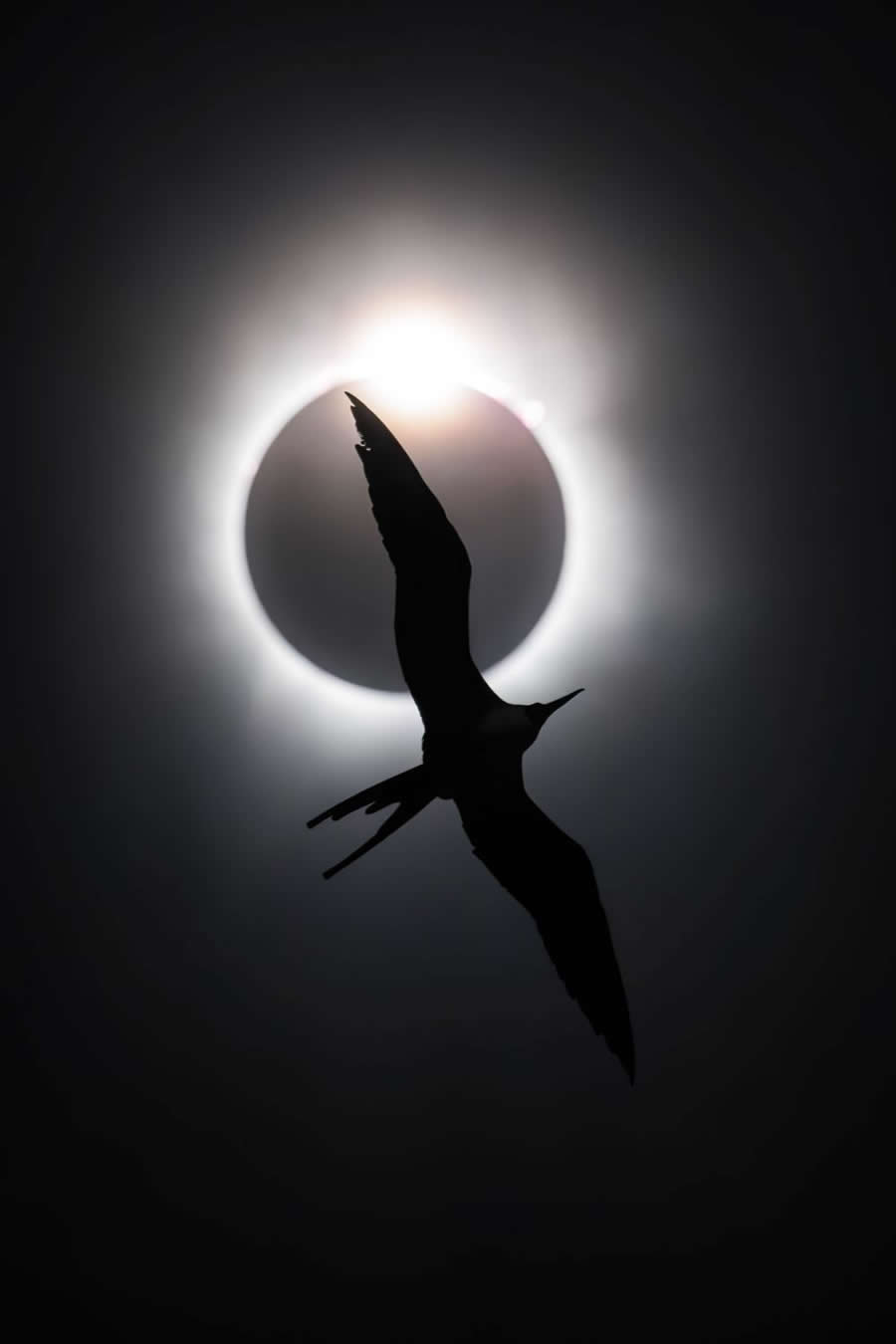
"A Magnificent frigatebird (Fregata magnificens) glides in front of a total solar eclipse. Over a year in the making, this image is all the more impressive once you learn that the eclipse is in a brief phase called the "Diamond Ring", where the slightest bit of sun is visible at the edge of the moon—meaning this photographer had only seconds to snap this spectacular shot. "
#15. "Big Hair Day" by Nick Kanakis, United States
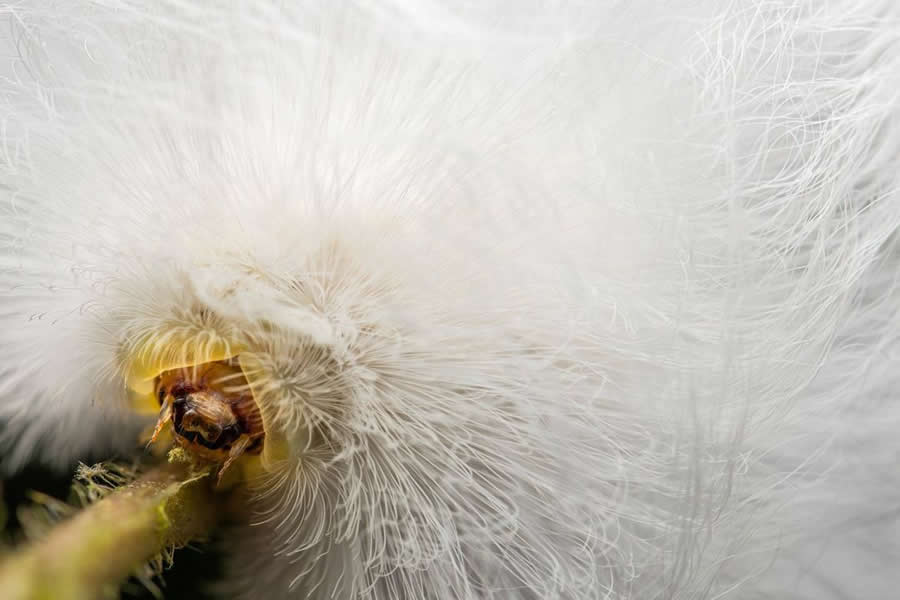
"A Flannel moth caterpillar (Megalopyge sp.) munching on moss while cocooned in the soft tangle of hair-like setae. While it may look fluffy and harmless, these setae in fact conceal venom-filled spines that produce a nasty sting."
#16. "Powerless" by Niki Colemont, Belgium
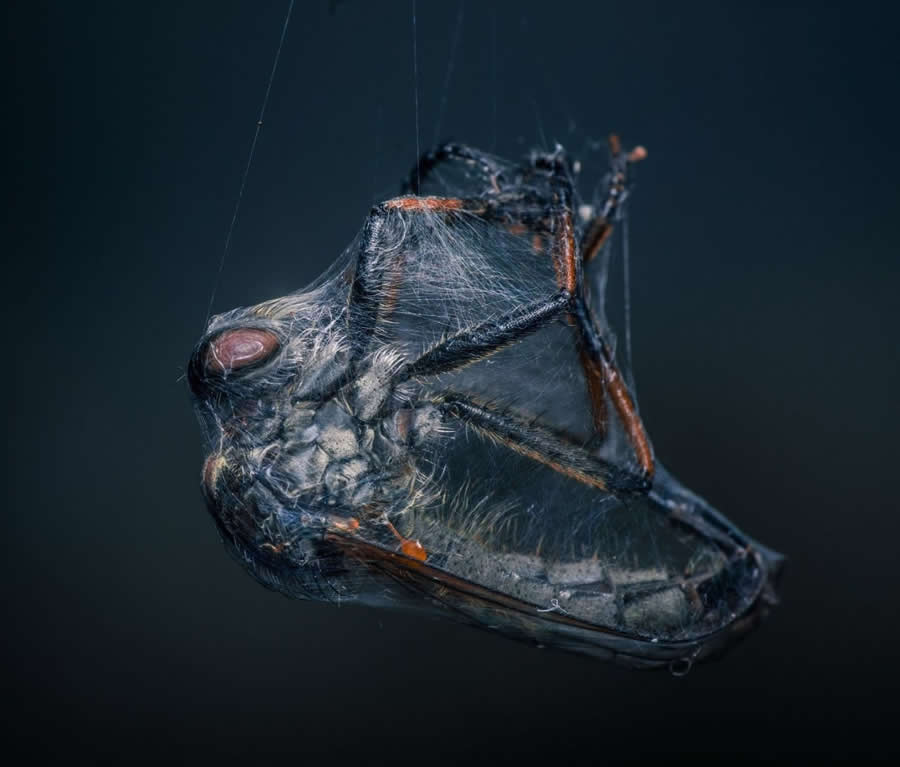
"While photographing another subject in a garden, this photographer spotted a Robber fly (family Asilidae), and a spider in its web. Curious if the fly might land in the web, he decided to stay and observe, eventually watching as nature’s quiet drama unfolded. Eventually, the spider made its move, and he was able to capture the moment."
#17. "Dance of the Elements" by Philipp Egger, Italy
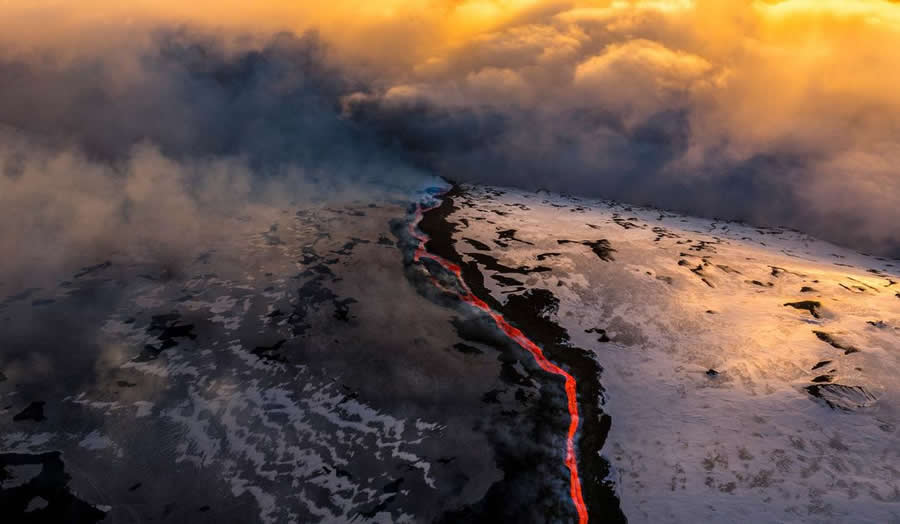
"Mount Etna is one of the tallest and most active volcanoes in Europe, making it a difficult photography subject between battling toxic smoke and unpredictable winds at nearly 12,000 feet up. A primeval titan, its lava flow typically rests under a blanket of snow during the winter, but on this day the fiery soul of this volcano broke through."
#18. "Nuptial Gift" by Piotr Naskrecki, United States
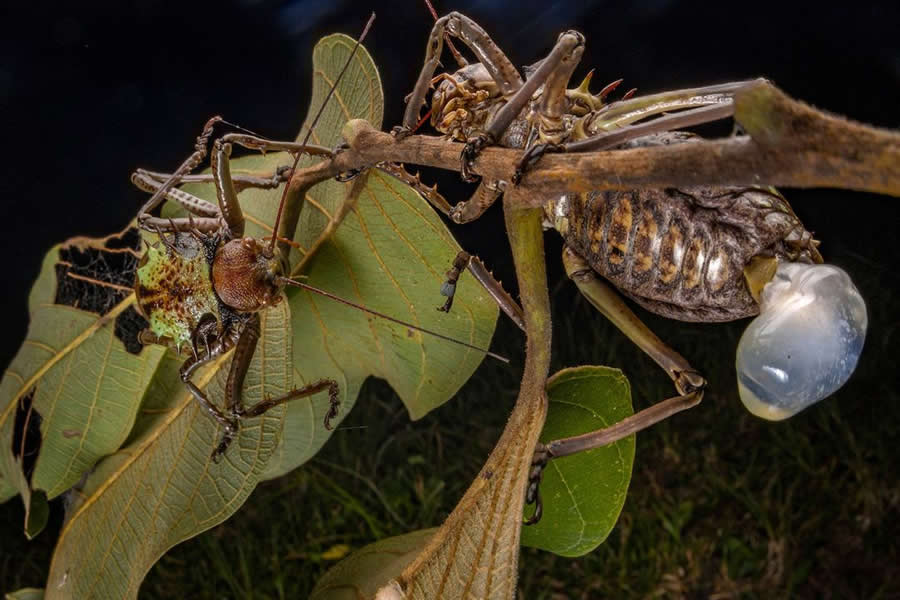
"During mating, a male Armored katydid (Acanthoplus discoidalis) presents the female with a spermatophylax—a nuptial gift in the form of a large, nutritious package produced by the male. The female will consume this gift, the purpose for which has been hotly debated—there’s no explicit benefit beyond securing paternal investment."
#19. "Trapped" by Roman Willi, Switzerland
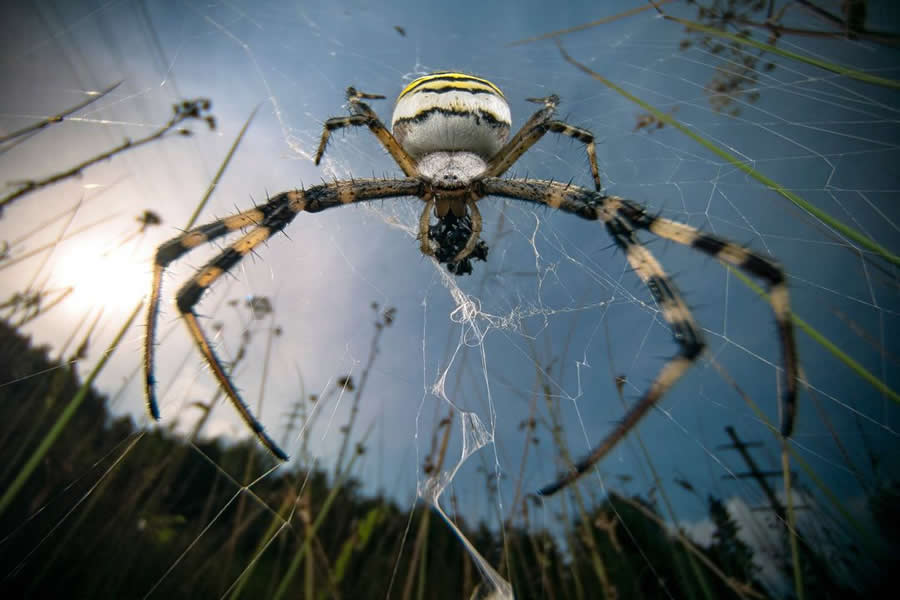
"A Wasp spider (Argiope bruennichi) feeds on its prey in a meadow. As their name suggests, these spiders are known for their distinctive yellow, white, and black markers and are remarkable orb-web weavers."
#20. "Urchin Spines" by Sayaka Ichinoseki, Japan
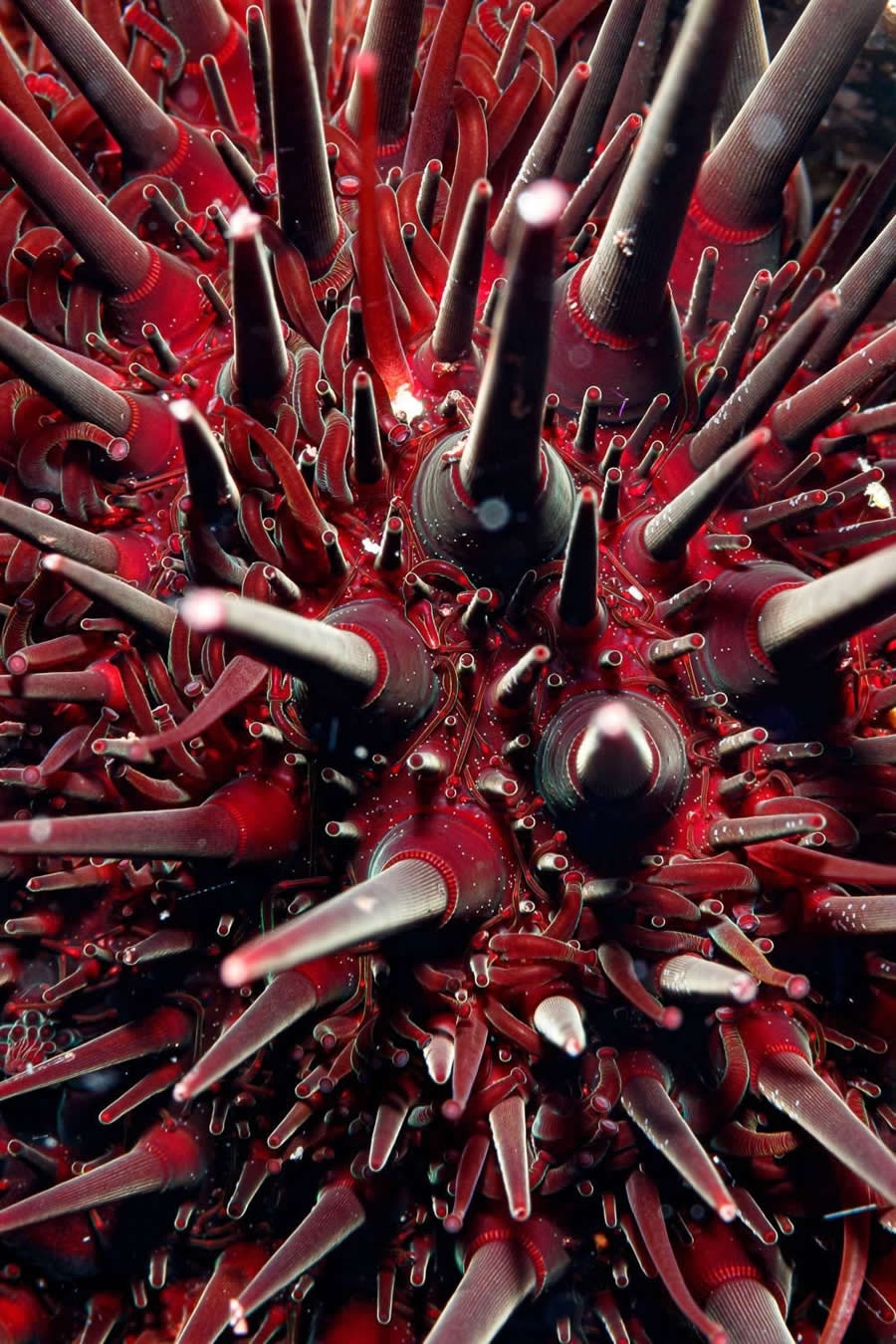
"What almost looks like a futuristic landscape is actually an extreme close up of a purple Sea urchin (class Echinoidea). These spike-like structures are actually moveable spines, alternating long and short, which the urchin uses not only for defense but as a means of transport as well."

